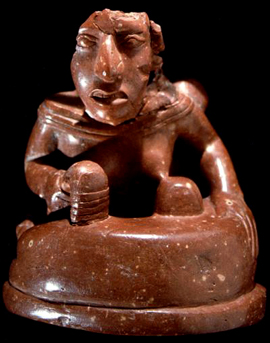Testimony of the Image: Global Treasures
from the Suppressed Histories Archives
A global visual survey illustrates the range of what has been overlooked / withheld from common knowledge, expanding our view of women in regions and time periods rarely discussed outside specialized academic publications. There are cultural treasures: the female monoliths of Ethiopia, Italy, and Sulawesi; women in the rock murals of Zimbabwe, Utah, Baja California and the Sahara; in the ceramics of Nok and Ife and Ecuador; the seals of Crete and Harappa, bronzes of China and Nigeria, and the stone sculptures of Illinois, Nigeria, Vietnam.
We scan the cultural record for direct testimony to broaden and shift our vision of women’s history and heritages. Theory is all very well, but how accessible is it to the great majority of women? Broken schools and systemic bias (on multiple levels) in a market-driven media have created almost total ignorance about the full range of female histories and heritages. Everyone has a right to a history that is meaningful, useful, and liberatory. Yet the idea persists that this knowledge must somehow be the preserve of academic specialists; that high theory supersedes direct, interdisciplinary examination of archaeology, history, orature, to see what might emerge.
One of the most fruitful angles of approach is to examine the iconographic record, and compare it with local histories / orature. The full cultural record needs to be taken out of sequestration and shared widely, so that women of all backgrounds can experience it, connect with an expanded sense of what is possible for women, and use it to make their own meaning.
This kind of interdisciplinary history is not a final, authoritative narrative, but a questioning assemblage of provisional histories that
foreground the common woman (remedying the omission of Indigenous women) within a historical landscape of interacting peoples and cultures, female spheres of power and patriarchies, conquests, classes, and colonizations, strategies of survival and resistance. At this starting point, questions and dialogues emerge, as women interpret for themselves, and increase their understanding of where they stand in the larger global picture.
How would women's lives change if we knew our full birthright—if we could witness the full, magnificent expanse of being female on this Earth? the ceremonial leaders, the lodge-building mothers, the painters of cosmic signs on ceramics, the rebels and liberators, the medicine women and dreamers. Seeing these realities feeds our hearts, hearing these stories is medicine to help us overcome the demoralization inflicted by a dominance-based culture of violence. We can be re-inspired for the global liberation movements now rising.
live visual presentation by Max Dashu -- 90 minutes
"Alafia good people: I just want to take this opportunity to praise the work of Max Dashu.
In Ifa we say it is important to call Red red and Black black. This woman's work is impeccable.
She is a long time worker on behalf of bringing the truth of history to the world, placing the history, art, and spirituality of the African diaspora in its proper place. If you are looking to educate yourself on our glorious past or to get a real view of the ancient world I highly recommend the works of Max Dashu."
In Sisterhood and Pride in Being Huma, Chief Luisah Teish, author of Jambalaya
© 2010 MaxDashu
Suppressed Histories Archives | Catalog | Online Courses
